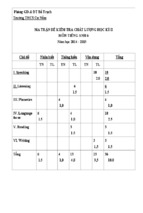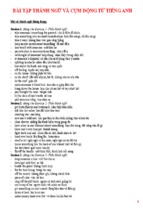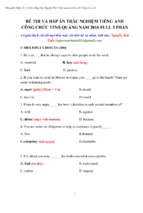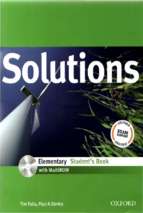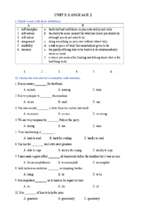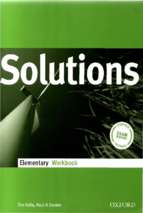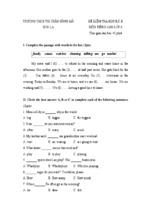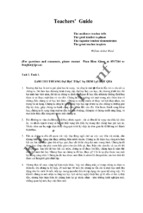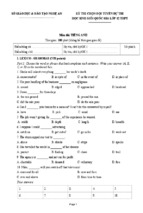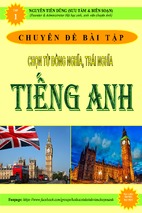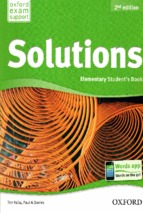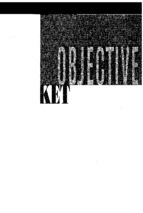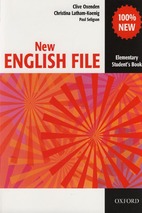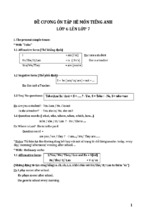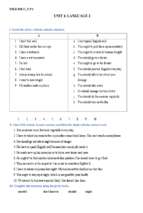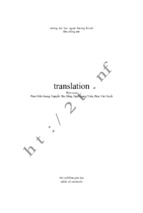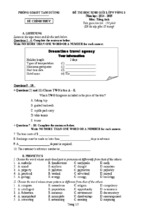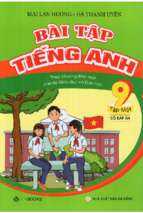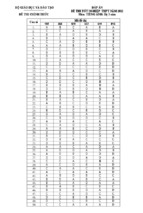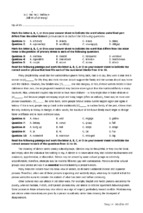As many as one thousand years ago in the Southwest, the Hopi and Zuni Indians of North America were building with
adobe – sun – baked brick plastered with mud. Their homes looked remarkably like modern apartment houses. Some
were four stories high and contained quarters for perhaps a thousand people, along with storerooms for grain and
other goods. These buildings were usually put up against cliffs , both to make construction easier and for defense
against enemies. They were really villages in themselves, as later Spanish explorers mush have realized since they
called them “ pueblos” , which is Spanish for town.
The people of the pueblos raised what are called “ the three sisters” – corn, beans, and squash. They made excellent
pottery and wove marvelous baskets, some so fine that they could hold water. The Southwest has always been a dry
country, where water is scare. The Hopi and Zuni brought water from streams to their fields and gardens through
irrigation ditches. Water was so important that it played a major role in their religion. They developed elaborate
ceremonies and religious rituals to bring rain.
The way of life of less-settled groups was simpler and more strongly influenced by nature. Small tribes such as the
Shoshone and Ute wandered the fry and mountains lands between the Rocky Mountains and the Pacific Ocean. They
gathered seeds and hunted small animals such as rabbits and snakes. In the Far North the ancestors of today’s Inuit
hunted seals , walruses, and the great whales. They lived tight on the frozen seas in shelters called igloos built of
blocks of packed snow. When summer came, they fished for salmon and hunted the lordly caribou.
The Cheyenne, Pawnee and Sioux tribes, known as the Plains Indians, lived on the grasslands between the Rocky
Mountains and the Mississippi River. They hunted bison, commonly called the buffalo. Its meat was the chief food of
these tribes, and its hide was used to make their clothing and the covering of their tents and tipis.
61. What does the passage mainly discuss?
A. The architecture of early American Indian buildings.
B. The movement of American Indians across North America.
C. Ceremonies and rituals of American Indians.
D. The way of life of American Indian tribes in early North America.
62. According to the passage, the Hopi and Zuni typically built their homes______________
A. in valleys
B. next to streams
C. on open plains
D. against cliffs
63. The word “ They “ refers to ___________
A. goods
B. buildings
C. cliffs
D. enemies
64. It can be inferred from the passage that the dwellings of the Hopi and Zuni were __________?
A. very small
B. highly advanced
C. difficult to defend
D. quickly constructed
65. The author uses the phrase “ the three sisters” to refer to ___________
A. Hopi women
B. family members
C. important crops
D. rain ceremonies
66. The word “ scare “ is closest in meaning to _________
A. limited
B. hidden
C. pure
D. necessary
67. Which of the following is true of the Shoshone and Ute?
A. They were not as settled as the Hopi and Zuni B. They hunted caribou
C. They built their homes with adobe
D. They did not have many religious ceremonies.
68. According to the passage , which of the following tribes lived in the grasslands?
A. the Shoshone and Ute
B. The Cheyenne and Sioux
C. The Hopi and Zuni
D. The Pawnee and Inuit
69. Which of the following animals was most important to the Plains Indians?
A. The salmon
B. The caribou
C. The seal
D. The buffalo
70. Which of the following is NOT mentioned
A. Log cabins
B. Adobe houses
by the author as a dwelling place of early North Americans?
C. Tipis
D. Igloos
With its radiant color and plantlike shape, the sea anemone looks more like a flower than an animal. More
specifically, the sea anemone is formed quite like the flower for which it is named with a body like a stem and
tentacles like petals in brilliant shades of blue , green, pink, and red. Its diameter varies from about six millimeters in
some species to more than ninety centimeters in giant varieties of Australia. Like corals, hydras, jellyfish, sea
anemones are coelenterate. They can move slowly, but more often they attach the lower part of their cylindrical
bodies to rocks, shells, or wharf pilings. The upper end of the sea anemone has a mouth surrounded by tentacles that
the animal uses to
capture
its food. Stinging cells in the tentacles animals then drag this prey into the sea
anemone’s mouth. The food is digested in the large inner body cavity. When disturbed, a sea anemone retracts its
tentacles and shortens its body so that it resembles a lump on a rock. Anemones may reproduce of forming eggs,
dividing in half, or developing buds that grow and break off as independent animals.
61. Which of the following is the main topic of the passage?
A. The varieties of ocean life
B. The characteristics of the sea anemone
C. A comparison of land and the sea anemones D. The defenses of coelenterates.
62. The word “ shape” is closest in meaning to ______________
A. length
B. grace
C. form
D. nature
63. The author compares a sea anemone’s tentacles to a flower’s ______________
A. stem
B. petals
C. leaves
D. roots
64. It can be inferred from the passage that hydras_______________
A. were named after a flower
B. are usually found in Australia
C. prey on sea anemones
D. are related to sea anemones
65. It can be inferred from the passage that sea anemones are usually found ___________
A. attached to stationary surfaces
B. hidden inside cylindrical objects
C. floating among underwater flowers
D. searching for food.
66. The word “ capture” is closest in meaning to ________________
A. catch
B. control
C. cover
D. clean
67. The word “ retracts” is closest in meaning to ______________
A. pulls back
B. relaxes
C. reproduces
D. lifts up
68. According to the passage, when a sea anemone is bothered it ___________
A. hides under a rock B. alters its shape
C. changes colors
D. ejects a poisonous substance
69. The sea anemone reproduce by ______________
A. budding only
B. forming eggs only
C. budding or diving only D. budding, forming eggs or diving
70. Based on the information in passage, all of the following statements about sea anemones are true EXCEPT that
they _______________
A. are usually tiny
B. have flexible bodies C. are related to jellyfish D. are usually brightly colored
The status of women in colonial North America has been well studied and described and can be
summarized. Throughout the colonial period there was a marked shortage of women, which varied with the regions
and was always greatest in the frontier areas. This favorable ratio enhanced women’s status and position and
allowed them to pursue different careers. The Puritans, the religious sect that dominated the early British colonies in
North America, regarded idleness as a sin, and believed that life in an undeveloped country made it absolutely
necessary that each member of the community perform an economic function. Thus work for women, married or
single, was not only approved, it was regarded as a civic duty. Puritan town councils expected widows and
unattached women to be self- supporting and for a long time provided needy spinsters with parcels of land.
There was no social sanction against married women working; on the contrary , wives were expected to help their
husbands in their trade and won social approval for doing extra work in or out of the home. Needy children, girls as
well as boys, were indentured or apprenticed and were expected to work for their keep.
The vast majority of women worked within their homes, where their labor produced most articles needed
for the family. The entire colonial production of cloth and clothing and partially that of shoes was in the hands of
women. In addition to these occupations, women were found in many different kinds of employment. They were
butchers, silversmiths, upholsterers . They ran mills n plantations , tanyards, shipyards, and every kind of shop,
tavern, and boardinghouse. They were gatekeepers, jail keepers, sextons, journalists, printers, apothecaries,
midwives, nurses, and teachers.
61. What does the passage mainly discuss?
A. Colonial marriages
B. The Puritan religion
C. Colonial women’s employment
D. Education in the colonies
62. The word “ marked” is closest in meaning to __________
A. underlined
B. graded
C. prolonged
D. distinct
63. According to the passage, where in colonial north America were there the fewest women?
A. Puritan communities
B. Seaports
C. frontiers settlements
D. Capital cities
64. The word “ enhanced “ is closest in meaning to ______________
A. supplemented
B. confirmed
C. improved
D. determined
65. It can be inferred from the passage that the Puritans were _______________
A. uneducated
B. hardworking
C. generous
D. wealthy
66. According to the passage, Puritans believed that un unmarried adult woman should be ______
A. financially responsible for herself
B. returned to England
C. supported by her family
D. trained to be a nurse
67. The phrase “ unattached women” is closest in meaning to which of the following?
A. women without high social status
B. women without property
C. unmarried women
D. unemployed women
68. According to the passage, what did the Puritans expect from married women?
A. They should adopt needy children
B. They should assist in their husband’s trade or business
C. They should work only within their own homes
D. They should be apprenticed
69. According to the passage , which products were made entirely by women?
A. gunpowder and bullets
B. cups and plates
C. paper and books
D. cloth and clothing
70. The lists in last lines are intended to show which of the following ?
A. the influence of the Puritans in the colonies
B. the limits of job opportunities in the colonies
C. the main industries of the colonial economy
D. the variety of work by colonial women.
Barbara Kasten is an artist who makes photographs of constructions that she creates for the purpose of
photographing them. In her studio she arranges objects such as mirrors, solid forms, and flat surfaces into what
could be called large still life arrangements, big enough to walk into. She lights the construction, then
rearranges and rephotographs it until she arrives at a final image. She also photographs away from her studio at
various architectural sites, bringing camera, lights, mirrors, and a crew of assistants to transform the site into
her own abstract image.
Kasten starts a studio construction with a simple problem, such as using several circular and rectangular
mirrors. She puts the first objects in place, sets up a camera, then she goes back and forth arranging objects and
seeing how they appear in the camera. Eventually she makes instant color prints to see what the image looks like.
At first she works only with objects , concentrating on their composition, then she lights them and adds color
from lights covered with colored filters.
Away from the studio, at architectural sites, the cost of the crew and the equipment rental means she has to
know in advance what she wants to do. She visits each location several times to make sketchers and test shots.
Until she brings in the lights, however, she can not predict exactly what they will do to the image, so there is
some improvising on the spot.
61. . What does the passage mainly discuss?
A. The techniques of a photographer.
B. The advantages of studio photography
C. Industrial construction sites
D. An artist who appreciates fine art.
62. Which of the following would be an example of one of the “ constructions “ referred to in line 1?
A. A still life arrangement
B. Natural landscapes
C. An instant color print
D. A colored filter.
63. In line 2, why does the author mention mirrors?
A. They are part of the camera
B. Kasten uses them as subjects
C. The crew needs them
D. Photography mirrors life.
64. The word “ transform “ is closest in meaning to ___________
A. move
B. extend
C. change
D. interpret
65. It can be inferred from the passage that Kasten makes instant prints to __________
A. give away
B. sell as souvenirs
C. include as part of the construction
D. see what the construction looks like at the stage
66. The word “ composition” is closest in meaning to _____________
A. arrangement
B. brightness
C. quality
D. size
67. The word “ them “ refers to __________
A. Prints
B. lights
C. objects
D. filters
68. The word “ shots” is closest in meaning to ___________:
A. injections
B. photographs
C. loud noises
D. effective remarks
69. Why does Kasten visit the location of outdoor work before the day of the actual shooting?
A. To plan the photograph
B. to purchase film and equipment
C. To hire a crew
D. To test the lights
70. How is Kasten’s studio different from her work at architectural sites?
A. She does not use light outdoors.
B. Her work outdoors is more unpredictable
C. She works alone outdoors
D. She makes more money from her work outdoors.
Alice Walker makes her living by writing ,and her poems, short stories, and novels have won many Awards and
fellowships for her. She was born in Eatonton, Georgia. She went to public schools there, and then to Spelman
College in Atlanta before coming to New York to attend Sarah Lawrence College, from which she graduated in 1966.
For a time she lived in Jackson, Mississippi, with her lawyer husband and small daughter. About Langston Hughes,
American Poet, her first book for children, she says: “ after my first meeting with Langston Hughes, I vowed I would
write a book about him for children someday. Why? Because I , at twenty-two, knew nest to nothing of his work, and
he didn’t scold me, he just gave me a stack of his books. And he was kind to me; I will always be grateful that in his
absolute warmth and generosity he fulfilled my deepest dream ( and need) of what a poet should be.
“To me he is not dead at all. Hardly a day goes by that I don’t think of him or speak of him. Once, just before he died,
when he was sick with the flu, I took him a sack full of oranges. The joy I felt in giving that simple gift is undiminished
by time. He said he liked oranges , too.”
61. What is the main topic of the passage?
A. Alice Walker’s reflections on Langston Hughes
B. The influence of Alice Walker on the writing of Langston Hughes
C. Langston Hughes’ book about Alice Walker
D. A comparison of the childhoods of Alice Walker and Langston Hughes
62. In the passage, Alice Walker is described as __________
A. a research fellow at Spelman College
B. a professor at Sarah Lawrence College
C. a prize-winning writer of prose and poetry
D. an author of plays for children
63. Before attending college, Alice Walker went to school in _____________
- Xem thêm -

